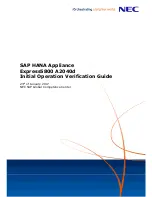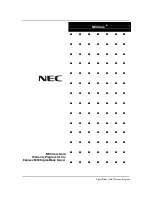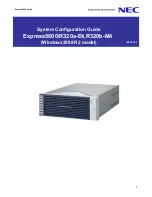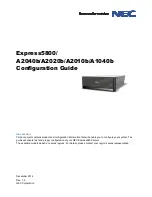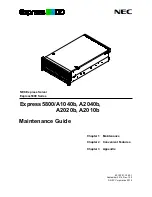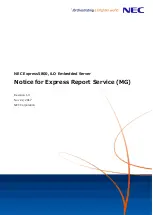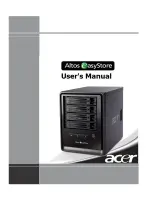
109
D14049.05
February 2009
Grey Headline
(continued)
TANDBERG
VIDEO COMMUNICATIONS SERVER
ADMINISTRATOR GUIDE
Introduction
Getting started
Overview and
status
System
configuration
VCS
configuration
Zones and
neighbors
Call
processing
Bandwidth
control
Firewall
traversal
Appendices
Applications
Maintenance
URI dialing
URI dialing via DNS for outgoing calls
Process
When a user places a call using URI dialing, they will typically dial
an address in the form
from their endpoint.
Below is the process that is followed when a URI address is
dialed from an endpoint registered with your VCS, or received as
a query from a neighbor system:
The VCS will check its Local Zone (which includes all peers in
1.
the cluster to which it may belong) and all its external zones to
see if any of them are configured with either:
an
•
AlwaysMatch
, or
a
•
PatternMatch
with a pattern that matches the URI
address.
These zones will then be queried, in order of match priority, for
2.
the URI.
If one or more of the zones that contain a match are DNS
•
zones, this will trigger the VCS to attempt to locate the
endpoint through a DNS lookup. It does this by querying
the DNS server configured on the VCS for the location of the
domain as per the
URI resolution process via DNS
. If the
domain part of the URI address was resolved successfully
the request is forwarded to those address(es).
If a neighbor, traversal client or traversal server zone
•
contains a match, the neighbor system will be queried for
the URI. If that system supports URI dialing via DNS, it may
route the call itself.
Adding and configuring DNS zones
In order to enable URI dialing via DNS, you must configure at least
one DNS zone. To do this:
Go to the
1.
Zones
page (
VCS configuration > Zones
).
Click
2.
New
. You will be taken to the
Create zone
page.
Enter a
3.
Name
for the zone and select a
Type
of
DNS
.
Click
4.
Create zone
. The zone will be saved and you will be
taken to the
Edit zone
page. See the sections below for
configuration options.
To create a new DNS zone using the CLI:
xCommand ZoneAd
•
d
Hop count
When dialing by URI via DNS, the hop count used is that
configured for the DNS zone that matches the URI address (if this
is lower than the hop count currently assigned to the call).
If there is no DNS zone configured that matches the URI address,
then the query may be forwarded to a neighbor. In this case, the
hop count used will be that configured for the neighbor zone (if
this is lower than the hop count currently assigned to the call).
Protocol
This section allows you to filter calls to systems and endpoints
located via this zone, based on whether the call is located using
SIP or H.323 SRV lookups
Include address record
This setting determines whether, if no NAPTR (SIP) or SRV (SIP
and H.323) records have been found for the dialed alias via this
zone, the VCS will then query for A and AAAA DNS records before
moving on to query lower priority zones.
We recommend that this setting is left as the default
Off
,
meaning that the VCS will not query for A and AAAA records, and
instead will continue with the search, querying the remaining
lower priority zones. This is because, unlike for NAPTR and SRV
records, there is no guarantee that the A/AAAA records will point
to a system capable of processing the relevant SIP or H.323
messages (LRQs, Setups, etc.) - the system may instead be a
web server that processes http messages, or a mail server that
processes mail messages. If this setting is
On
, when a system
is found using A/AAAA lookup, the VCS will send the signaling to
that destination and will not continue the search process. If the
system does not support SIP or H.323, the call will fail.
Zone profile
For most deployments, this option should be left as
Default
.
Configuring matches for DNS zones
If you wish your local VCS to be able to use DNS to locate
endpoints outside your network, then you should create a DNS
zone and use the
Pattern string
and
Pattern type
fields to define
the aliases that will trigger a DNS query.
For example:
a match with a
•
Pattern string
of
.*@.*
and a
Pattern type
of
Regex
will mean that DNS is queried for all aliases in the form
of typical URI addresses
a match with a
•
Pattern string
of
(?!.*@example.com$).*
and a
Pattern type
of
Regex
will mean that DNS is queried for
all aliases in the form of typical URI addresses except those
for the domain
example.com
.
To set up further filters, configure the remaining matches in the
same DNS zone. You don’t need to create new DNS zones for
each match unless you want to configure more than the maximum
of 5 matches. However, you should create separate DNS zones
if you want to filter based on the protocol (SIP or H.323) or hop
count to be used.
We do not recommend configuring DNS zones with a
match that has a
Mode
of
AlwaysMatch
. This will result in
DNS always being queried for all aliases, including those
that may be locally registered and those that are not in the form
of URI addresses.
Configuring DNS servers
To configure the DNS servers to be used by the VCS when
querying DNS:
System configuration > DNS
•
.
You will be taken to the
DNS
page.
xConfiguration IP DNS Serve
•
r
Address 1 to Address 5
Enter the IP address(es) of up to 5 DNS server(s) that the VCS will
query when attempting to locate a domain. These fields must use
an IP address, not a FQDN.
The DNS server(s) configured here are used as part of
both the ENUM dialing and URI dialing via DNS processes.
If you do not configure any DNS servers, calls made using
URI dialing will still be placed if the destination endpoint
is locally registered or registered to a neighbor system,
because locating these URIs does not require the use of DNS.































